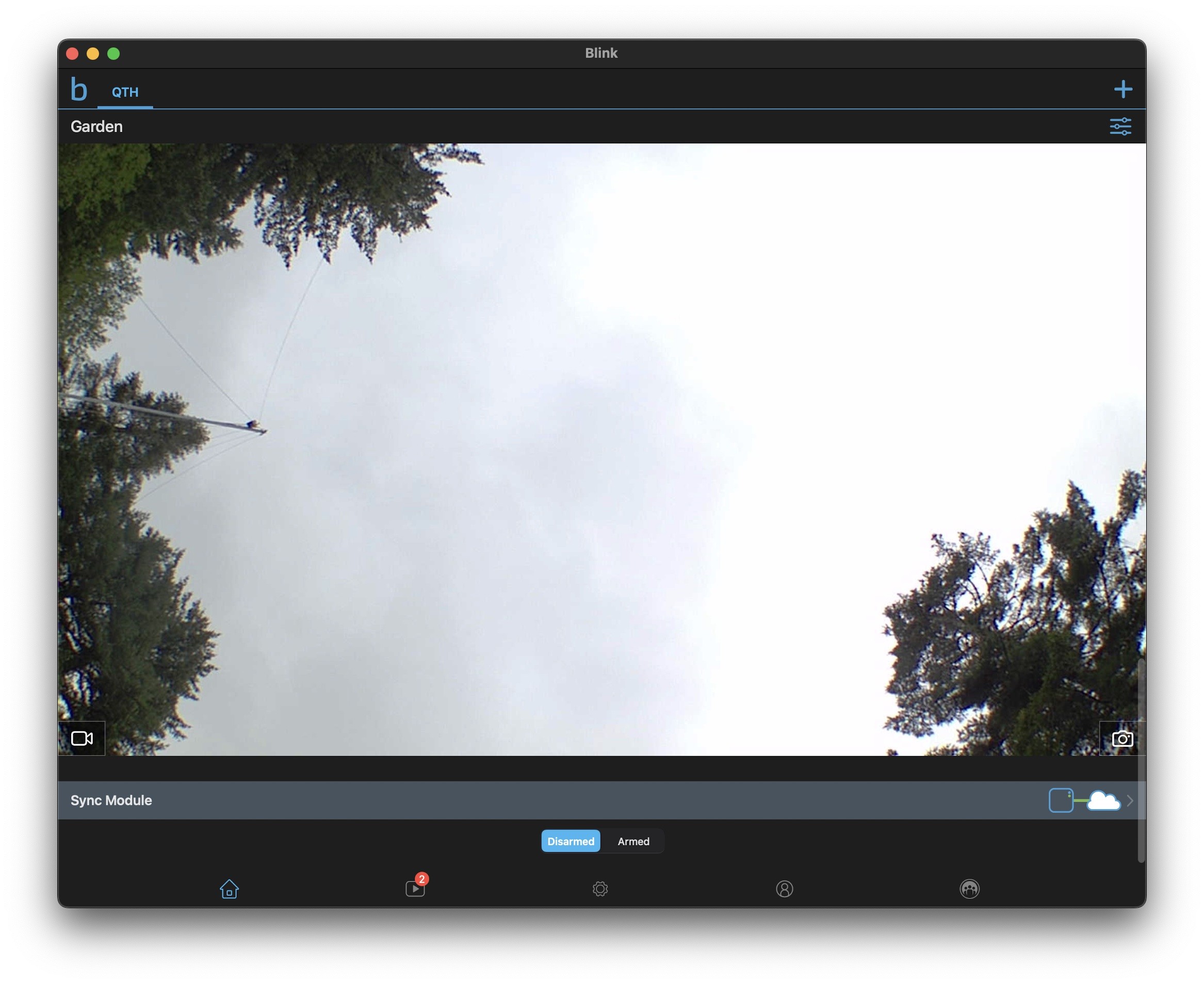mikeinlehigh A thousand dollars for one? I just can't justify it especially if one can be built in a few hours for a third of the price
Me neither. I can afford it, but don't want to support people who gouge.
By the way, I just pointed one of my Amazon Blink cameras straight up (yep, 100% overcast -- i.e., normal, in Portland). Located close to my All Sky camera whose images I posed earlier. "Borrowed" from the Blink that I use to point to our garden, thus the name :-).
Looks almost as wide length wise, but not as tall in height as my all sky camera (which is not horizon-to-horizon).

I'll see if it can pick up any stars at night (it might be "clear" tonight but with terrible transparancy). Will report back.
I am sure it will go into "monochrome" mode at night (same kind of near IR sensitivity of the IMX678, where the R, G and B sensitivities all bunch together to form a monochrome image at the 850 nm region.
So, no star colors for sure (not that the IMX178 could pick up that much star colors anyway :-).
But if it is actualy sensitive enough to see stars (it picks up deer at night :-), we can add some optics to it to get a wider angle (perhaps even the cheap "wide angle" attachments for smartphones).
If the darn thing is sensitive enough, it can be the "turnkey" all sky camera for the masses (especially the masses that already have the Blink system at home, since it does need a Blink hub in addition to the camera module. At least it can warn you of clouds directly overhead (rain!), even with its existing camera angle. At least the wireless range is fantastic to the hub, and the hub just has to see the home WiFi system. I also have the third party solar panels to go with each of my Blinks, although I doubt it will last more than a few dozen pictures, so this will need a microUSB cable to feed 5V to it.
Chen